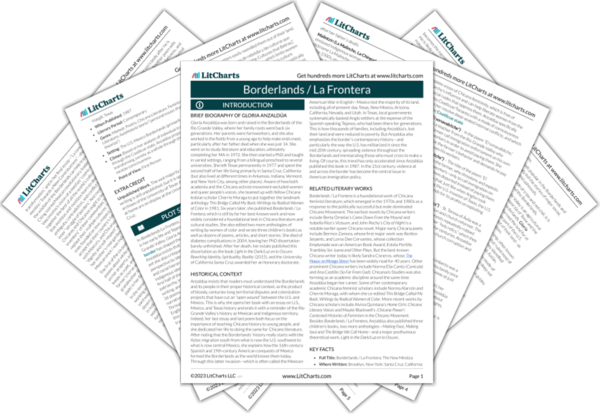Chicana/o Quotes in Borderlands / La Frontera
Pero he crecido. Ya no sólo paso toda mi vida botando las costumbres y los valores de mi cultura que me traicionan. También recojo las costumbres que por el tiempo se han provado y las costumbres de respeto a las mujeres. But despite my growing tolerance, for this Chicana la guerra de independencia is a constant.
La gente Chicana tiene tres madres. All three are mediators: Guadalupe, the virgin mother who has not abandoned us, la Chingada (Malinche), the raped mother whom we have abandoned, and la Llorona, the mother who seeks her lost children and is a combination of the other two.
Because we are a complex, heterogeneous people, we speak many languages. Some of the languages we speak are:
1. Standard English
2. Working class and slang English
3. Standard Spanish
4. Standard Mexican Spanish
5. North Mexican Spanish dialect
6. Chicano Spanish (Texas, New Mexico, Arizona and California have regional variations)
7. Tex-Mex
8. Pachuco (called caló)
So, if you want to really hurt me, talk badly about my language. Ethnic identity is twin skin to linguistic identity—I am my language. Until I can take pride in my language, I cannot take pride in myself. Until I can accept as legitimate Chicano Texas Spanish, Tex-Mex and all the other languages I speak, I cannot accept the legitimacy of myself. Until I am free to write bilingually and to switch codes without having always to translate, while I still have to speak English or Spanish when I would rather speak Spanglish, and as long as I have to accommodate the English speakers rather than having them accommodate me, my tongue will be illegitimate.












